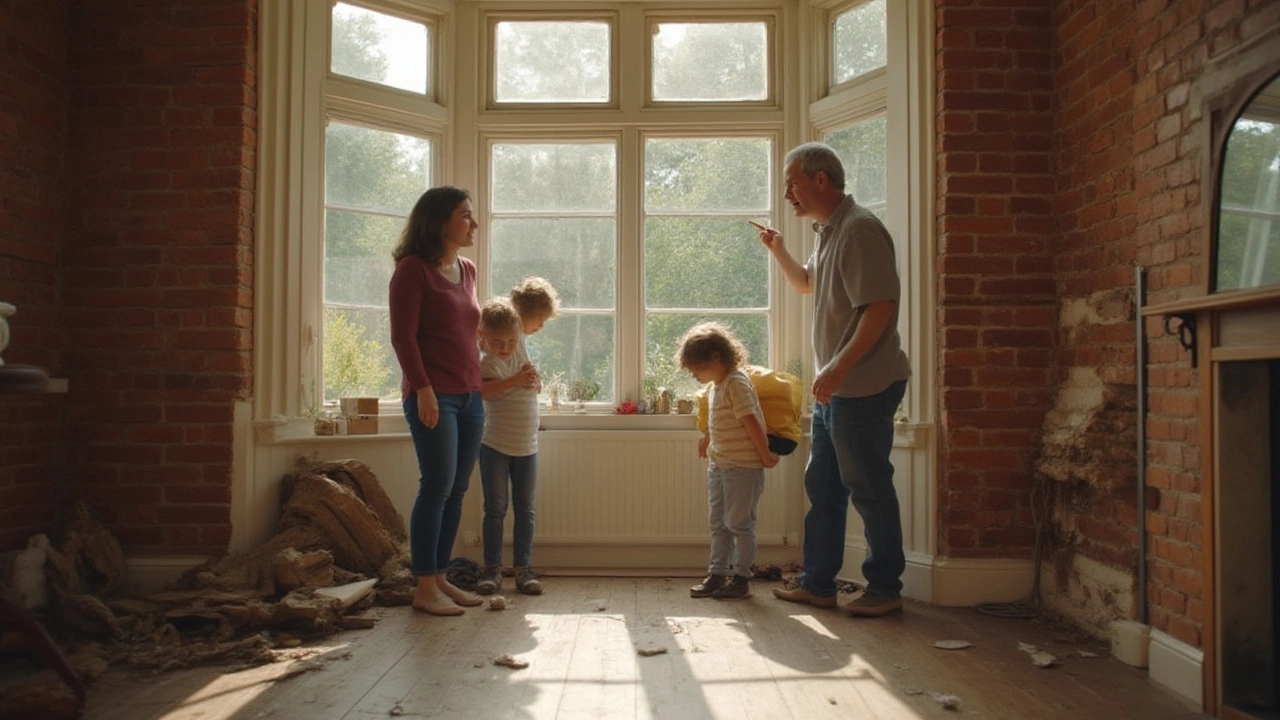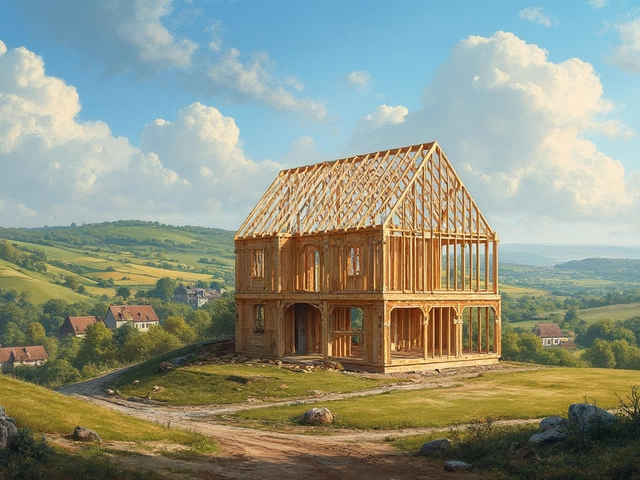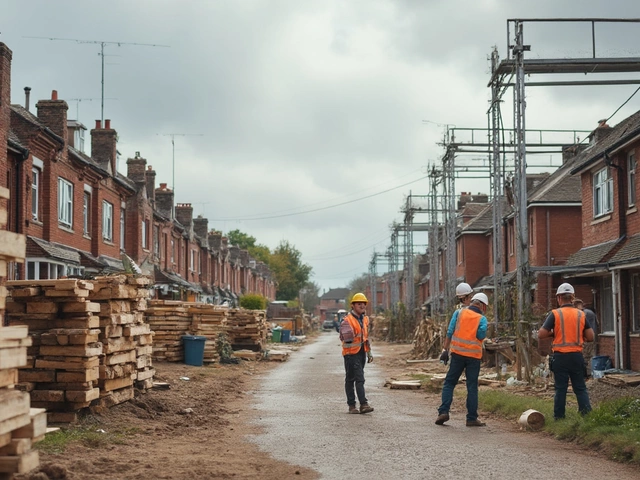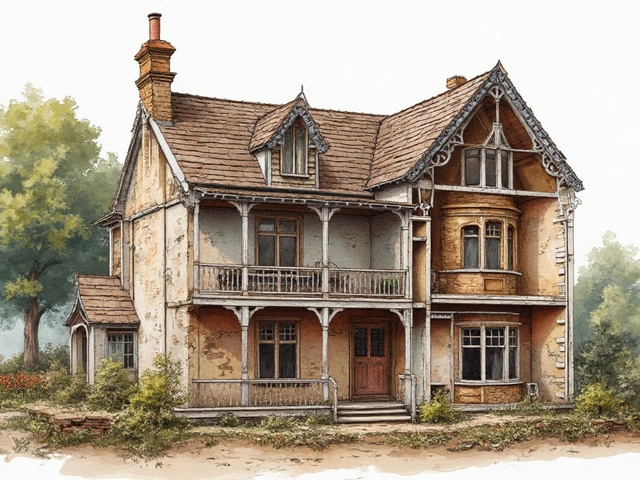Imagine waking up one morning to find a fine crack running across your sitting room wall. It’s a subtle line, nothing wild, but it wasn’t there last week. Now your mind begins to race: Is this just old plaster acting up, or is the very ground beneath your home starting to shift? The thought nags. Foundation issues aren’t just for old mansions on the telly. They can happen in a new build, a Victorian terrace, or a bungalow built in 1980. It’s not just bricks and mortar at stake – the entire safety and value of your house rides on the strength of that invisible base. Most people ignore the signs until the damage is hard to miss, but catching foundation problems early can save you a world of expense and headaches.
Why Foundations Matter More Than You Realise
Foundations are the unsung heroes of every home. They're the bit you rarely see, but without them, your house wouldn’t stand a chance against gravity, weather, or time. Every brick, beam, and roof tile relies on the stability of what's underneath. Here in the UK, about 20% of insurance claims on homes are related to subsidence—that’s when the ground beneath a property starts to give way, causing foundations to sink or move. Tree roots, leaky pipes, and even prolonged periods of rain or drought can play havoc with the ground. The scary reality? Many homes are built on clay soil, which swells and shrinks with moisture, turning foundations into a rollercoaster over decades.
It’s not just dramatic disasters you’re looking for. Most foundation issues start small. A group from the University of Bristol found that over 50% of homes with visible wall cracks were actually showing early-stage foundation movement. Yet, less than 10% of the owners thought it was anything serious. You don’t need to be a structural engineer to notice the warning signs; you just need to know where to look and what they mean for the safety of your home.
If a foundation slips, everything above it follows. You could see warped door frames, sloping floors, and mysterious gaps that seem to grow by the month. Insurance companies in the UK pay out, on average, £3,000 to £12,000 per claim for foundation-related repairs, but that’s only if you catch it before things get out of hand. It’s honestly worth learning what your home is trying to tell you.
Spotting the Early Signs: Don’t Ignore These Red Flags
Foundation issues rarely announce themselves with flashing lights or sirens. Instead, they creep in with a handful of subtle (and not so subtle) clues dotted around your house. Here’s what to keep an eye out for.
- Cracks in Walls and Ceilings: Not all cracks are equal. Hairline cracks might just be the house settling, but wider, diagonal cracks running from door or window corners often point to foundation movement. If you spot a crack wider than a 10p coin, especially if it keeps growing, take it seriously.
- Doors and Windows That Stick: frames that warp or doors that suddenly refuse to shut can be an early symptom. Sometimes, people shave the door to make it close, not realizing it’s the foundation causing the trouble.
- Sloping or Uneven Floors: If you drop a marble and it rolls without a nudge, your floor might be on a tilt. Uneven floors often suggest that one part of the foundation is moving more than another.
- Gaps Around Windows or External Walls: Gaps that appear overnight, either inside where walls meet the ceiling or around the outside edges of the house, suggest shifting foundations. They’re more than a draft problem—they’re a call to check under the hood.
- Baseboards Separating from the Wall: If your skirting boards start pulling away or there are visible gaps at the bottom of the walls, it’s often a sign the wall is bending or moving outwards.
In fact, a nationwide survey in 2023 showed that homes with sticky doors also reported cracks above windows in more than 70% of cases. So the symptoms often pile up, and when you see more than one, don’t wait. Don’t just paint over the cracks and hope for the best. The sooner you act, the smoother—and cheaper—the fix tends to be.
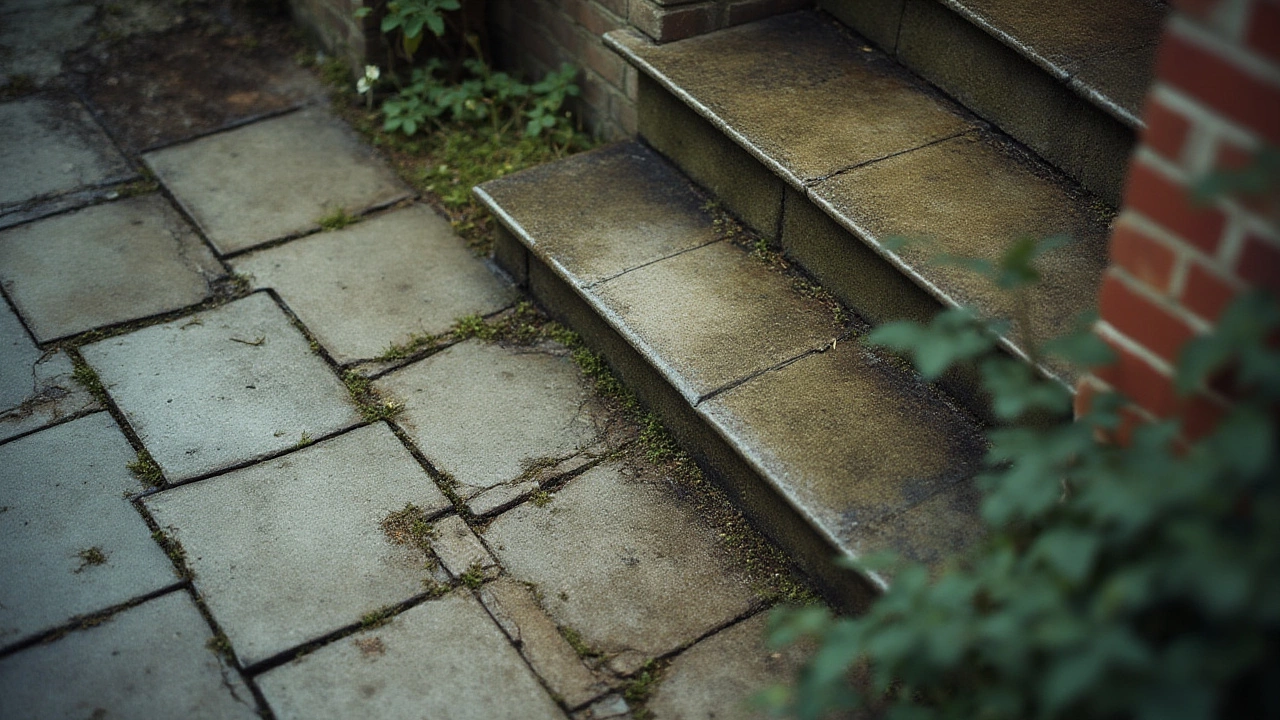
Main Causes Behind Foundation Issues in the UK
You might wonder, why would the ground shift underneath your house in the first place? It usually comes down to three things: soil, water, and trees. Here’s the breakdown:
- Soil Type: The biggest culprit for foundation headaches in the UK is clay soil. It swells when it’s wet and shrinks when it’s dry, almost like bread rising and falling in an oven. About 55% of homes in southern England sit on clay-heavy soil.
- Water Leaks: Even a hidden drip from an old pipe can, over time, wash away soil from beneath your house. This leaves gaps for your foundation to sink into. Thames Water reports over 600 leaks per day in the greater London area alone, so it’s not as rare as you’d think.
- Trees and Shrubs: Those leafy giants in your garden are beautiful but thirsty. An oak can draw up hundreds of litres of water a day, drying out the ground around your house and causing the soil to sink, especially during hot, dry summers.
- Recent Construction Work: Any renovations, extensions, or driveway digging can disturb the ground equilibrium, leading to unexpected shifting and settlement after the work’s finished.
- Extreme Weather: Wet winters and scorching summers can both affect the movement of soil. The summer of 2022 brought at least a 25% spike in subsidence claims after long dry spells shrank the clay soil more than usual.
| Cause | Percentage of Reported Cases (UK) |
|---|---|
| Clay soil movement | 55% |
| Water leaks | 22% |
| Trees/shrub roots | 16% |
| Renovation/disturbance | 5% |
| Other/unknown | 2% |
Knowing what’s beneath your feet makes all the difference. If you’re house-hunting, ask your surveyor about the soil type and drainage. It can arm you with info to prevent future issues, such as regular checks on plumbing or being choosy about what you plant next to your home.
What To Do If You Spot a Problem
So let’s say you’ve noticed a few of those signs—maybe cracks above the door or a patch of uneven flooring. Don’t panic or immediately assume your house is doomed. What you do next matters a lot.
- Document Everything: Take dated photos of each crack or gap, using a coin or ruler for scale. Keep a diary if you see changes over the weeks or months. This record will help if you need to speak to insurers or professionals later.
- Measure the Cracks: For DIY sleuthing, if you see a crack wider than 5mm (a standard pencil’s width), keep a close eye. Getting wider? Call someone in.
- Check for Moisture: Damp patches, musty smells, or bubbling paint can hint at water leaks under the house. Fixing a leak may fix the foundation problem before it gets out of hand.
- Look Outside: Check the soil near your foundations, especially after a big rain or drought. If it feels unusually loose or sunken, note it down.
At this point, you’re probably best off calling in a professional. Chartered surveyors (RICS-accredited in the UK) are trained to tell harmless cracks from the worrying ones. Expect to pay around £300-£600 for a basic structural report depending on your location and property size. If you go ahead with a survey, ask for a clear action plan. Should you monitor things for a few months, fix a leak, or jump straight to underpinning? The expert should lay it out plainly.
Spotting issues early gives you the upper hand. Sometimes, jobs as simple as cutting back tree roots or patching a leaking drain can stop the movement and save thousands. For serious cases, you might need underpinning (reinforcing the foundation), which can run into tens of thousands, but it’s often the last resort. You’re not alone—over 15,000 UK homeowners go through this process every year, usually after ignoring the red flags a bit too long.
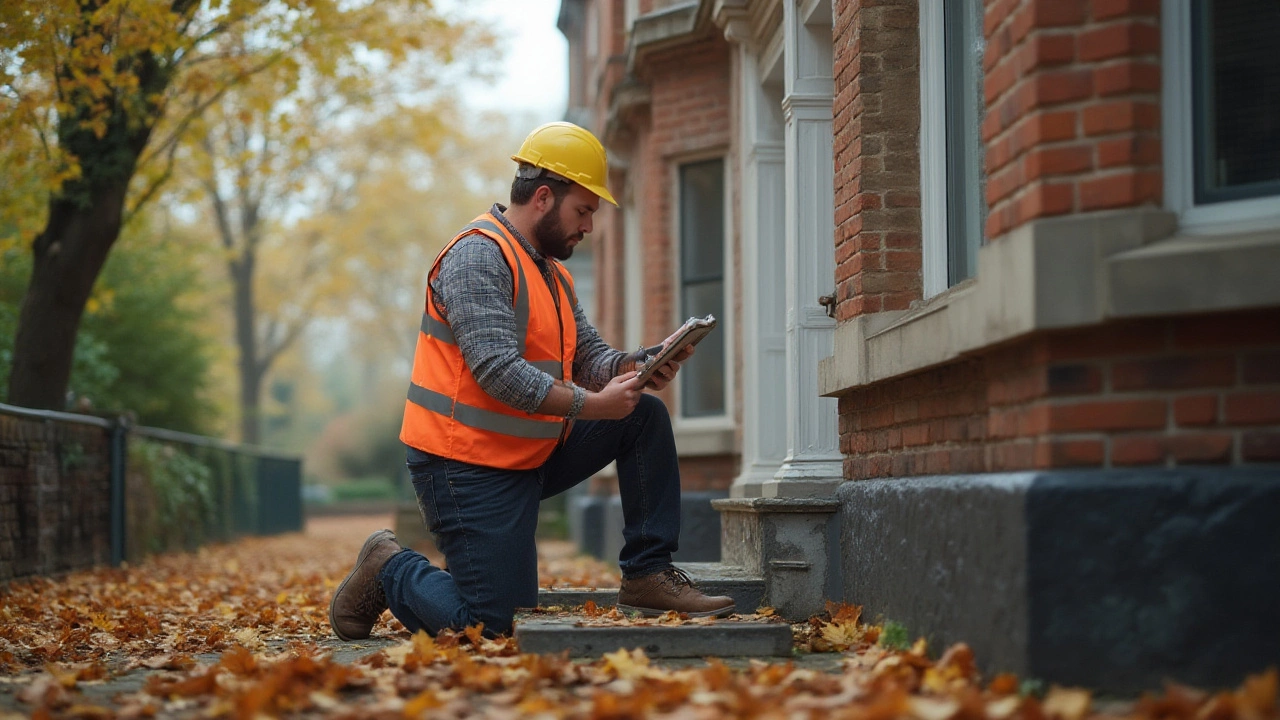
Protecting Your Home: Preventative Steps That Actually Work
No one likes surprises, especially when it comes to their home’s foundation. Luckily, there are practical steps you can take to safeguard against future problems—and most are simpler than you’d think.
- Maintain Consistent Moisture Levels: Clay-loving homeowners know the pain. Try to keep the soil around your home at a steady moisture content. During long dry spells, water the ground gently—not the walls!—to stop the soil from shrinking too much.
- Keep Trees at a Safe Distance: Follow guidelines: at least as far from the house as their eventual height. For bigger trees like oaks, that could be 20 metres or more. If the tree’s already established, seek advice before cutting or pruning, as sudden removal can bring on sudden movement too.
- Monitor Plumbing: Fix leaky taps, broken gutters, and rainwater pipes straightaway, as water is the biggest hidden threat to your foundation issues. Install water alarms if your home is prone to leaks.
- Gutter and Drain Maintenance: Keep gutters clear, as overflowing water will soak the ground right where you don’t want it—beside your foundation. It sounds boring but it can make all the difference.
- Regularly Inspect Your Home: Every season, do your own mini-inspection. Walk around your house, check for fresh cracks, sticky doors, or bulging skirting boards.
If you’re buying a house, always get a full structural survey. It might feel like another expense, but it’s money well spent if it spares you future headache (and cash outlay). Insurance can also make a huge difference. Some standard home insurance covers subsidence and heave, but read the small print before relying on it.
Back in Bristol, there was a case last year where a couple caught a bulge in their kitchen wall, called in a survey, and found a leaking waste pipe. Fixing the pipe nipped the issue in the bud—no expensive underpinning, minimal hassle, and zero drama. Sometimes, it really is that simple if you catch it early enough.
So, keep one eye open for those tell-tale cracks, don’t ignore a wonky door, and snap a photo when something looks off. Your home usually gives you hints—it just takes a bit of practical attention to make sure small concerns don’t grow into big regrets.

